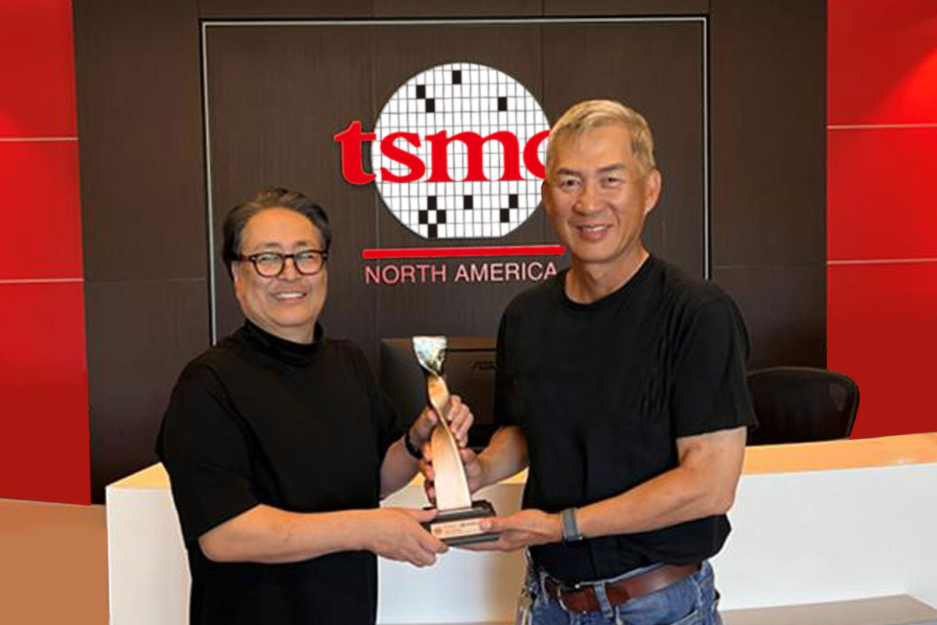The best Side of apollo mcu
The best Side of apollo mcu
Blog Article

Powered by the Ambiq Apollo3 Blue microcontroller (MCU), the token is actually a physical device using Bluetooth® signals to trace Many others close by. In addition to remaining precise, secured, Protected, As well as in a small form component, the Apollo3 Blue delivers the mandatory general performance devoid of sacrificing battery existence. The token is expected to very last 4 to six months with no recharge.
The new style and design center features layout, verification, and validation engineering groups that may focus on the long run structure of SPOT-enabled edge smart devices.
Each and every sample we share includes a detailed analysis methodology used to deliver the report. Be sure to also access our profits staff to have the entire list of our information resources.
As component of the growth, Ambiq is actively recruiting regional talents to bolster its staff and help its worldwide enlargement.
They were now one hundred toes (30 m) from your area, with only 90 seconds of propellant remaining. Lunar dust kicked up through the LM's motor started to impair his capability to find out the spacecraft's movement. Some huge rocks jutted out with the dust cloud, and Armstrong centered on them throughout his descent so he could establish the spacecraft's velocity.[127]
The ability will deal with expanding its style and design, verification, and validation engineering teams to guidance business expansion.
Apollo eleven was released by a Saturn V rocket from Kennedy House Heart on Merritt Island, Florida, on July sixteen at 13:32 UTC, and it had been the fifth crewed mission of NASA's Apollo program. The Apollo spacecraft experienced a few sections: a command module (CM) by using a cabin to the a few astronauts, the one portion that returned to Earth; a provider module (SM), which supported the command module with propulsion, electrical electricity, oxygen, and drinking water; along with a lunar module (LM) that had two levels—a descent phase for landing within the Moon and an ascent stage to position the astronauts again into lunar orbit.
Apollo4 Blue 01 Ambiq®, the leader in small-electrical power system on chip (SoC) layout, has Yet again raised the bar Along with the Apollo4 Blue SoC. With the lowest dynamic and snooze manner electrical power on the market, the Apollo4 Blue SoC makes it possible for designers of future-generation wearables and clever devices to take their modern products and solutions to the following stage.
In line with its expansion technique, Ambiq designs to grow its technologies structure Centre in Singapore, which was introduced in April last 12 months, to meet the climbing demands and even further improve its circuit style and design capabilities. As portion of this growth, Ambiq is actively recruiting regional abilities to bolster its group and guidance its international enlargement.
By the tip of April, the charred spacecraft 012 had been disassembled to find the root of your incident along with the pieces of Apollo have been bit by bit returning collectively.
Through the mission, the result in was diagnosed because the rendezvous radar switch becoming in the wrong position, causing the pc to course of action facts from both equally the rendezvous and landing radars simultaneously.[121][122] Application engineer Don Eyles concluded within a 2005 Advice and Manage Meeting paper that the condition was as a consequence of a components design and style bug previously seen through screening of the very first uncrewed LM in Apollo 5. Owning the rendezvous radar on (so it absolutely was warmed up in case of an emergency landing abort) ought to have been irrelevant to the computer, but an electrical phasing mismatch in between two aspects of the rendezvous radar process could result in the stationary antenna to appear to the pc as dithering backwards and forwards between two positions, dependent upon how the components randomly driven up.
[one hundred ten] Mission controllers had planned to send Apollo twelve's S-IVB into photo voltaic orbit soon after separation through the Apollo spacecraft, however it is believed the melt away lasted much too very long, and that's why did not send it shut plenty of on the Moon, so it remained within a barely secure orbit round the Earth and Moon. In 1971, by way of a series of gravitational perturbations, it is actually thought to get entered in a photo voltaic orbit then returned into weakly captured Earth orbit 31 a long time afterwards. It still left Earth orbit once more in June 2003.[111] See also[edit]
Armstrong then jumped on to the ladder's 3rd rung, and climbed into your LM. Just after transferring to LM life support, the explorers lightened the ascent phase with the return to lunar orbit by tossing out their PLSS backpacks, lunar overshoes, an vacant Hasselblad digicam, and various machines. The hatch was shut yet again at 05:eleven:13. They then pressurized the LM and settled right down to rest.[163]
If it were being to remain on precisely the same trajectory given that the spacecraft, the S-IVB could have offered a collision hazard, so its remaining propellants ended up vented and the auxiliary propulsion program fired to move it absent. For lunar missions right before Apollo 13, the S-IVB was directed toward the Moon's trailing edge in its orbit so the Moon would slingshot it outside of earth escape velocity and into photo voltaic orbit.
Get Smart. Use Less Energy.
Ultra-low power SoCs for IoT endpoint devices
that demand complex operations
and longer battery life.
✍ Ambiq® is committed to further improve the quality of life by enabling the intelligence of endpoints while further reducing carbon footprints. Ambiq – your partner in endpoint intelligence.
✯✯✯Based in Austin, San Jose, Hsinchu, Shenzhen, and Shanghai, our leadership and management teams consist of advocates, builders, enthusiasts, entrepreneurs, explorers, incubators, inventors, pioneers, protectors, thinkers, and visionaries. With a diverse spectrum of experiences and skillset, we came together and united with one goal to enable the true Internet of Things where the battery-powered endpoint devices can truly be connected intuitively and intelligently 24/7.
Ambiq Wins the Demo of the Year Award at 2023 TSMC Technology Symposium
September 7, 2023, Austin, TX – Ambiq®, a leading developer of ultra-low-power semiconductor solutions that deliver a multifold increase in energy efficiency, was awarded the Demo of the Year Award by TSMC as a participant of the Innovation Zone at the 2023 Ambiq TSMC North America Technology Symposium.
Ambiq Wins the Demo of the Year Award at 2023 TSMC Technology Symposium
During the April event, Ambiq showcased various product design wins using TSMC’s 22nm technology in wearables, digital health, smart home, Industrial IoT, pet trackers, and retail segments, with industry-leading energy efficiency. Ambiq also featured two live demos emphasizing its leadership in enabling endpoint AI with its HeartKit™ for remote patient monitoring and its graphics display capabilities for a vivid user interface. 
TSMC pioneered the pure-play semiconductor foundry business model when it was founded in 1987, helping startup companies accelerate their innovations by providing access to the industry’s leading process technologies and manufacturing capacity. Since 2021, TSMC has expanded that mission with an Innovation Zone at its worldwide Technology Symposiums, highlighting how TSMC partners with startup companies to enable cutting-edge products from various applications, including high-performance computing, communication, automotive, IoT, and consumer segments.
“We’re grateful to TSMC and our booth visitors for allowing us to share our energy-efficient technology and processor solutions with them,” said Ambiq’s CEO, Fumihide Esaka. “We’re moving towards an exciting frontier of AI becoming more engrained with our daily lives. With that vision on the horizon, we will continue to develop innovative and first-of-its-kind ultra-low-powered solutions that keep innovation and sustainability in mind. 
Ambiq’s mission is to develop the lowest-power semiconductor solutions to enable intelligent devices everywhere by developing the lowest-power semiconductor solutions to drive a more energy-efficient, sustainable, and data-driven world. Ambiq has helped leading manufacturers worldwide develop products that last weeks on a single charge (rather than days), while delivering a maximum feature set in compact industrial designs. Ambiq’s goal is to take Artificial Intelligence (AI) where it has never gone before in mobile and portable devices, using Ambiq’s advanced ultra-low power system on chip (SoC) solutions. Ambiq has shipped more than 200 million units as of March 2023.
Ambiq Designs Low-Power for Next Gen Endpoint Devices
Ambiq’s VP of Architecture and Product Planning, Dan Cermak, joins the ipXchange team at CES to discuss how manufacturers can improve their products with ultra-low power. As technology becomes more sophisticated, energy consumption continues to grow. Here Dan outlines how Ambiq stays ahead of the curve by planning for energy requirements 5 years in advance.
Ambiq Highlights From Embedded World 2024
Facebook | Linkedin | Twitter | YouTube